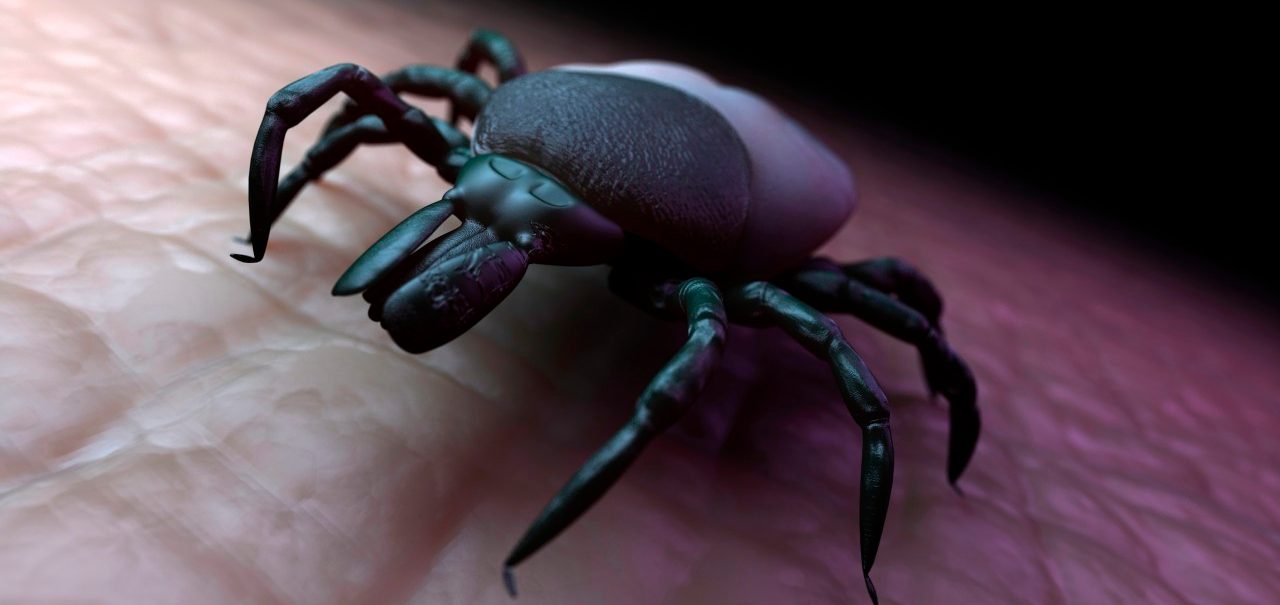Lone Star Tick Is Spreading Meat Allergy Across U.S.

Lone Star ticks, or "meat allergy ticks," once found mostly in the South, are spreading across the U.S., and the allergy they can spread is potentially deadly.
Tiny blood sucking creatures latch onto unsuspecting humans. The people enjoy a steak or burger later in the day, and nothing seems amiss until hours later when, without warning, the creatures’ victims are stricken with a severe illness and left gasping to breathe.
This may sound like a sci-fi plot but, instead, it’s a real and growing problem. The creatures are Lone Star ticks, once mostly found in the South but now spreading across the U.S. And their bites are making people dangerously allergic to red meat.
Mike Abley of Virginia was an early case. Twenty years ago, he enjoyed a juicy hamburger for dinner. A few hours later he went into anaphylactic shock, the most serious and life-threatening of allergic reactions. Itching all over with hives, his tongue was so swollen it blocked his throat, Abley lost consciousness.
Last summer, Clare Smith of North Carolina ate a cheeseburger at a Memorial Day picnic and felt fine. But in the middle of the night, she too was stricken with a mysterious, serious illness heralded by an itchy rash.
Both Abley and Smith survived their unexpected close calls. Tests showed their health crises were caused by a severe allergy to all red meat. But how could that be possible when they had been eating meat all their lives with no problem?
The Lone Star tick is to blame
Scientists have uncovered the answer. Abley and Smith are among approximately 1,500 Americans known to have suffered a sudden, potentially deadly allergic reaction to meat after being bitten by ticks. The tick species spreading the allergy has the scientific name Amblyomma americanum, but is usually called the Lone Star tick, due to the white spot on the female’s back that resembles a star.
In a research paper published in the Journal of General Internal Medicine, doctors Susan Wolver and Diane Sun and colleagues from Virginia Commonwealth University (VCU) explored three case histories of people with seemingly inexplicable meat allergies. They showed how these health problems were traced to Lone Star tick bites.
The VCU team explained that antibodies are produced in a person’s blood in response specifically to Lone Star tick bites. Because alpha-gal is also present in all meat from mammals, eating meat causes the immune system to react in overdrive — releasing histamine and producing hives and potentially life-threatening anaphylaxis.
How this allergy is different
The tick-induced meat allergy is different from other allergies in several ways. It’s the first time anaphylaxis has been noted as a delayed condition, instead of occurring immediately after exposure. “It is also a unique allergy because it is the first food-induced severe allergic reaction due to a carbohydrate rather than a protein,” Wolver said. “Current guidance is that patients actually avoid mammalian meat altogether — beef, pork, lamb, and venison. That’s very distasteful for my patient who loves his steak.”
The Lone Star species does not spread the tick-borne Lyme disease, but it is now linked to several other illnesses, in addition to sparking meat allergies. Investigators from the Centers for Disease Control and Prevention (CDC) and Missouri Western State University found that the Heartland virus, reported for the first time in 2 Missouri men infected in 2009, is transmitted via Lone Star tick bites.
While other tick species have been identified with spreading Rocky Mountain spotted fever, a potentially serious bacterial infection, the CDC has found that Lone Star ticks can also carry that disease. What’s more, the species has been linked to southern tick-associated rash illness (STARI) which causes fatigue, headache, fever, and muscle pains, as well as a rash.
How to protect yourself
With Lone Star ticks now found in large numbers as far north as Maine and as far west as central Texas and Oklahoma, how do you protect yourself if you enjoy hiking, gardening, and other outdoor activities?
The CDC advises avoiding all tick bites by staying clear of tick habitats, such as densely wooded and brushy areas, using insect repellents containing DEET or permethrin, and wearing long pants and socks. It’s also important to check your body over for ticks after outdoor activities. If you have any signs of a tick bite, watch your health closely and see your doctor if you have a rash, fever, headache, joint or muscle pains, or swollen lymph nodes within 30 days of a tick bite, the CDC advises.
Updated:
March 03, 2020
Reviewed By:
Christopher Nystuen, MD, MBA